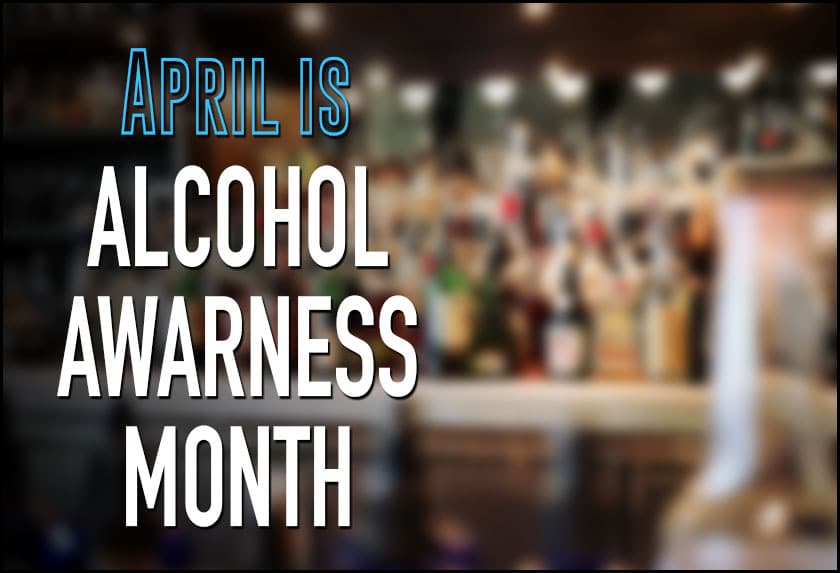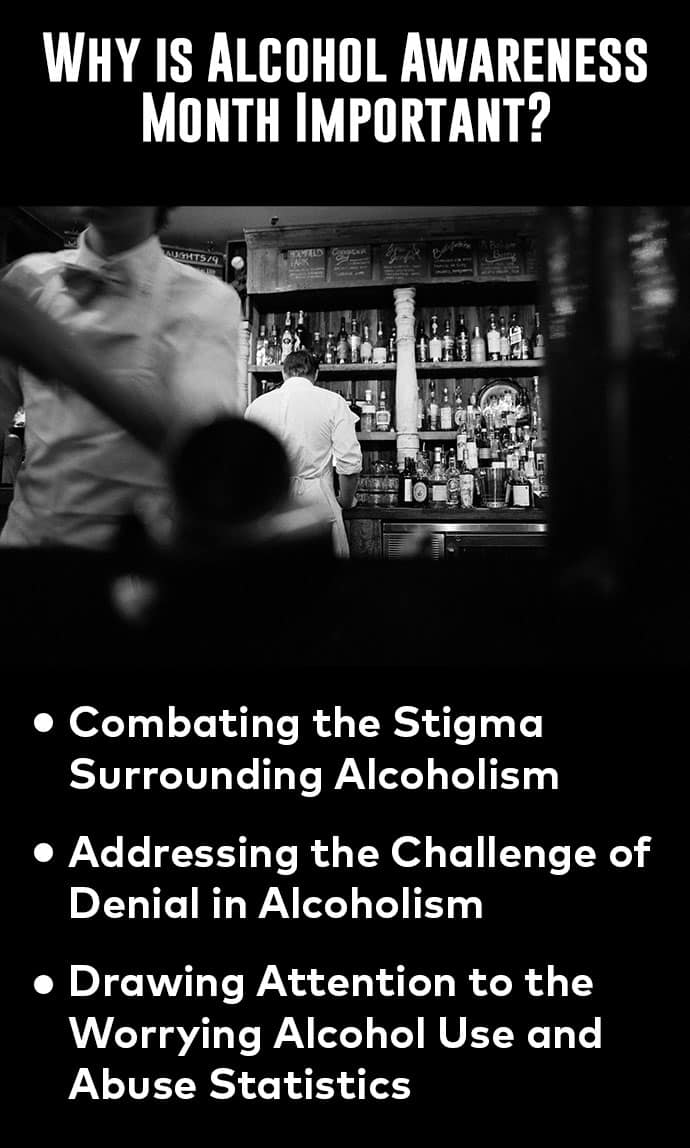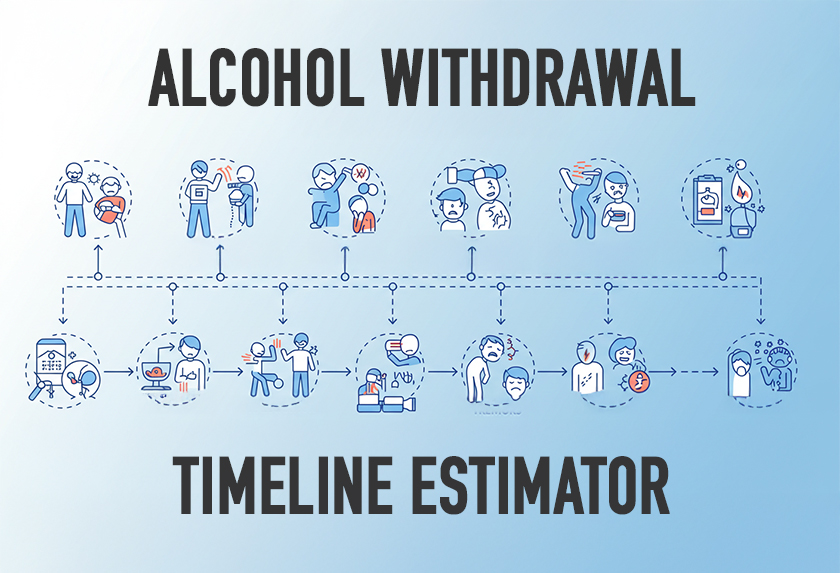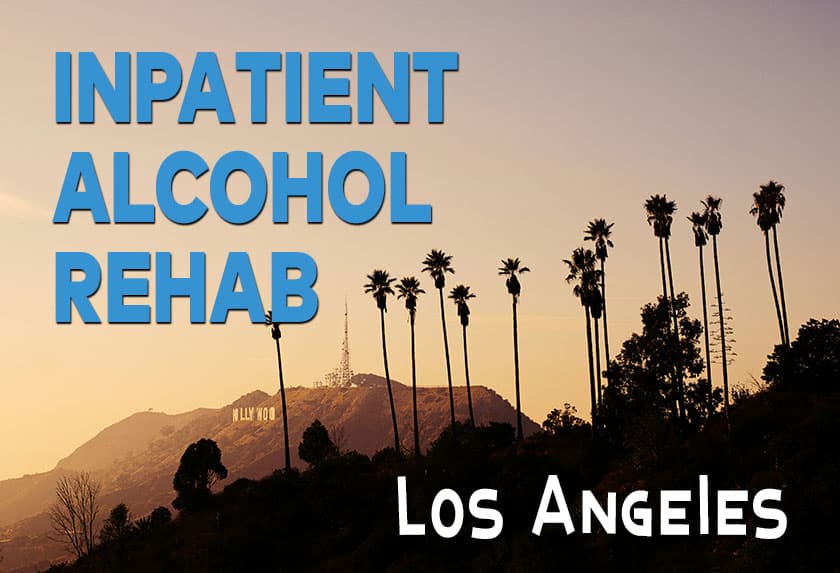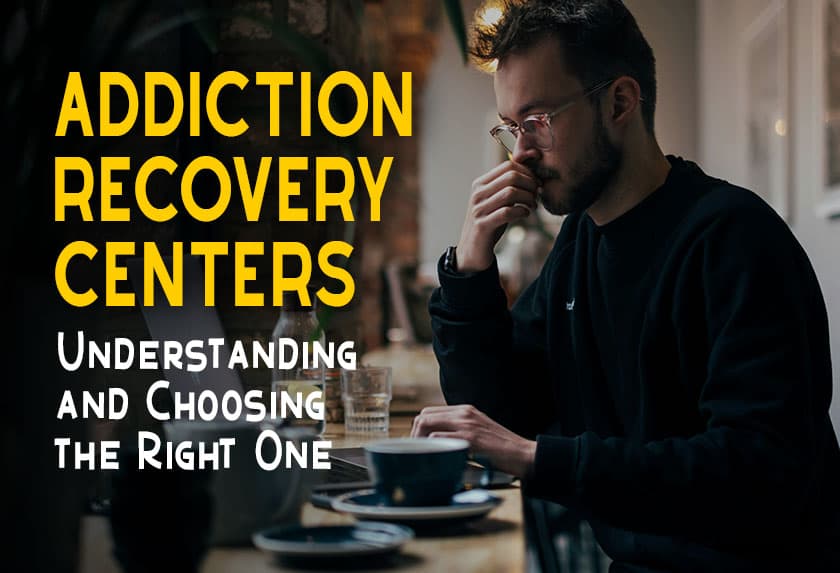April is Alcohol Awareness Month! It’s a month to stop and call out alcohol as the silent killer it is. This is especially important in a society that blindly glorifies alcoholism.
Booze adverts are everywhere. Hollywood and the entertainment industry continue to romanticize excessive alcohol consumption. Social media feeds are littered with people proudly capturing their drinking adventures. Alcohol consumption seems to be firmly ingrained in our culture. But it shouldn’t!
There’s nothing glamorous about swallowing toxic liquids. America’s love affair with booze is misplaced, and millions of lives are lost, with countless others destroyed as a result.
According to the Centers for Disease Control and Prevention (CDC), “excessive drinking is associated with 1 in 10 deaths among working-age adults.” That bottle of booze we see paraded everywhere is the third leading preventable cause of death—claiming around 95,000 lives every year.
Alcohol Awareness Month is one of the few initiatives that allow us to reflect on our drinking habits—and how we knowingly condemn ourselves to physical, mental, and social harm. It’s a campaign that helps draw attention to one of the most significant health issues in the U.S. and around the world.
Read on for everything you need to know about Alcohol Awareness Month, including its history, importance, and how you can observe the month.
History of National Alcohol Awareness Month
Alcohol has long been a thorn in America’s side. From the temperance movement in the 1800s to the 1920 ban on alcohol, we’ve been waging a seemingly never-ending war against the drug.
While radical, gung-ho measures have proved to be inefficient (as is evidenced by the 1920 Nationwide Prohibition that only sparked a boom in illegal alcohol networks), Alcohol Awareness Month takes a different approach.
In 1987, the National Council on Alcoholism and Drug Dependence (NCADD) marked April as National Awareness Month intending to spark meaningful conversations around the reality of alcohol abuse and alcoholism similar to National Recovery Month.
The program by the NCADD initially targeted college students—educating them on the short-term and long-term risks of alcohol use. But this noble cause gradually blossomed into a national movement that is still going strong to this day.
Participating in the National Alcohol Awareness Month is an opportunity to help overcome the stigma associated with alcoholism by increasing public understanding of the disease, encouraging direct engagement with those in need, and advocating for improved access to treatment resources.
Help is available to those who need it! Together we can curb alcohol abuse and addiction. We need to get this message around—and we have an entire month dedicated to that exact purpose.
Why is Alcohol Awareness Month Important?
The more awareness we raise about the dangers of alcohol abuse and how it’s chronic but treatable, the more afflicted people will feel comfortable enough to seek help. This effectively removes the barriers to treatment resources—potentially saving lives.
Here’s why April is a special month in the fight against alcohol abuse and alcoholism:
- Combating the Stigma Surrounding Alcoholism
Whereas drinking is glorified in our society, succumbing to alcohol addiction is shunned, which is ironic.
Alcohol has been shown to be a central nervous system depressant with potent addictive properties. Drinking frequently puts you at significant risk of falling into a vicious cycle of dependence and greater tolerance, where the brain adapts to rely on the drug.
When alcohol addiction takes hold of you, breaking free is not only difficult but dangerous. Yet there’s a stigma in the society that anyone who falls into the depth of alcoholism is weak or even immoral. People assume that if an alcoholic tried hard enough, they could overcome their addiction. They think of alcoholism as a flaw in character, a lack of will. This is the same society that tells you it’s cool to play with fire (drink) but frowns on you when you get burned.
National Alcohol Awareness Month is a chance to break such stigmas. It’s a time to educate people on the facts of addiction. That it does not discriminate. Anyone is fair game—regardless of your age, gender, ethnicity, religion, or socioeconomic status. And every bottle of alcohol you down brings you a step closer to the edge of alcohol addiction.
- Addressing the Challenge of Denial in Alcoholism
Alcoholism is sneaky. Like a devil on your shoulder, it whispers that you don’t have a problem with addiction, that you have control, and there’s nothing to fret about. It convinces the afflicted to believe such lies as it wreaks havoc on their internal organs, relationships, financial life, and mental health.
Denial is a common telltale sign of someone ensnared by the chain of alcohol addiction. It is seen in the form of someone:
- Underestimating the amount of alcohol they consume
- Overestimating their ability to curb or control their cravings and drinking patterns
- Trivializing the impact of alcohol on their lives
- Miscalculating the duration of the drinking problem
Denial in alcoholism even extends to family and friends, who are reluctant or uncomfortable in coming to terms with the fact that their loved ones are trapped in a vicious cycle of addiction.
Spreading awareness of the causes, effects, and signs of alcoholism helps the afflicted, their loved ones, and the public in acknowledging the reality of the disease. Alcohol addiction is a real and serious problem. People with alcohol dependence need help. And everyone else needs to take a long, hard look at their drinking habits and their perceptions about the drug.
- Drawing Attention to the Worrying Alcohol Use and Abuse Statistics
The harrowing alcohol use and abuse statistics are key to understanding why we need to take our alcohol awareness efforts up a notch. The numbers don’t lie, and they paint a grim picture of how prevalent alcoholism is in the country, particularly in California.
Here are facts and figures by National Center for Drug Abuse Statistics (NCDAS) to highlight the importance of Alcohol Awareness Month:
- It’s estimated that 261 Americans lose their lives every day to excessive drinking.
- Americans drink away more than 2.7 million years of potential life.
- 6 in every 10 people increased their consumption of alcohol following the COVID-19 lockdown measures.
- More than 95,000 Americans die from alcohol-related causes annually—including liver disease (31%), alcohol poisoning (14.85%), and suicide, 10.44%).
- Around 150 annual child deaths tie back to an intoxicated adult.
- Up to 90% of young adults drink alcohol on their 21st
California stands out as a ‘hotbed’ for alcohol use, abuse, and addiction when we look at state-level data. Some notable statistics on alcoholism in the Golden State include:
- California is a huge alcohol market. According to figures by Statista, Californians downed a staggering 83.25 million gallons of pure alcohol in 2019? The Golden State was followed by Texas and Florida at 52.98 million and 49.27 million gallons, respectively. Wyoming has the least alcohol consumption at 1.35 million gallons.
- The 2022 edition of “ Substance Use in California” by the California Health Care Foundation (CHCF) shows that 1 in every 2 Californians above the age of 12 reported drinking alcohol in the past month.
- The Behavioral Health Barometer Substance Abuse and Mental Health Services Administration (SAMHSA) reports that California has higher alcohol abuse and dependency rates than the national average, which stood at 7.3% in 2014.
- It’s estimated that 3 million Californians struggle with alcoholism.
There are effective alcohol addiction treatment options available in California. If you or your loved ones are part of the worrying statistics on the prevalence of alcohol use and alcoholism in the state, seek help.
Understanding Alcohol Abuse
Alcohol addiction or alcohol use disorder (AUD) is a complex disease linked to genetic, psychological, and behavioral risk factors. While it’s hard to pinpoint the exact causes of alcoholism, it’s important to note that people from all walks of life are at risk of being afflicted by the disease.
What are the Possible Signs of Alcohol Addiction?
Alcohol also affects people in different ways, which means that the symptoms of alcohol addiction are not always apparent. Recognizing alcohol use disorder in yourself or others is challenging and sometimes subjective. Still, there are some key signs you can watch out for. This includes:
- Trying to stop or cut down your drinking is proving difficult.
- Frequently drinking even when the habit is wreaking havoc in your life.
- You have to drink more to get the effect you want.
- Withdrawal symptoms when the effects of alcohol wear off. Common withdrawal symptoms include nausea, sweating, sleeping problems, shakiness, restlessness, and a racing heart, to name a few.
- Attempts to keep your drinking habits a secret.
- Spending a significant amount of time drinking or recovering from the effects of alcohol use.
- Giving up on activities that you found interesting due to your drinking.
- Frequently drinking more and for longer than intended.
- Professional or legal problems traced to your use of alcohol.
- Failing to meet your personal obligations due to your drinking habits.
- Having strong cravings for alcohol.
- Dependence on alcohol to feel ‘normal’ or function in everyday life.
- Increasingly associating yourself with people who engage in excessive consumption of alcohol.
- High-risk behavior and the use of alcohol in dangerous situations.
Alcohol Addiction Treatment
Help is available for AUD. Identifying the possible signs and symptoms of alcohol addiction early, knowing the stages of alcoholism, seeking professional treatment, and having a support system go a long way in increasing your chances of successful recovery.
Alcohol addiction treatment starts with an accurate diagnosis of AUD, which includes questions on your health history, drinking habits, physical complications, and psychological and behavioral symptoms. After diagnosis, you can explore the different alcohol addiction treatments available with the help of a qualified health professional.
Treatment is individualized, but it often involves detoxification and medication-assisted treatment in conjunction with different therapies. The goal is to relieve short-term symptoms and create a solid foundation to tackle long-term effects or cravings.
It’s important to note that the most effective alcohol addiction treatment options are tailored to the patient’s unique needs. And if alcohol addiction is not treated, the disease can spiral down into serious—and even life-threatening—health problems.
How to Observe Alcohol Awareness Month
Do you wish more people knew about the dangers of alcohol use before buying into its glorified facade? Or do you have a loved one who you feel needs to be educated on the treatment options available for alcohol addiction?
Alcohol Awareness Month is an open invitation to anyone interested in making a difference by helping the community understand how alcohol misuse affects lives and how to find help. Here are some ways you can observe the month:
- Start Conversations to Help Raise Alcohol Awareness
It’s everyone’s responsibility to initiate conversations that spark discussions on alcohol use and addiction. Meaningful dialogue on the reality of alcohol—beyond all the glorification and romanticization—has been sorely lacking. April, and every month after that, is an opportunity to change that narrative.
Start with your inner circle and expand outwards. Talk to your children, reach out to your family, spell out the undeniable facts to your friends, and turn to social media—simply go out and raise awareness. Some resources you can use and share include:
- SAMHSA’s “ They hear you” campaign for underage drinking prevention.
- The “Regulating Alcohol Outlet Density: An Action Guide” video resource by the Community Anti-Drug Coalitions of America (CADCA) and the Center on Alcohol Marketing and Youth (CAMY)—which highlights alcohol use prevention strategies in the community.
- The “College and Drinking: A Risky Curriculum” and “Teens and Alcohol: A Bad Mix” videos by CADCA and the National Institute on Alcohol Abuse and Alcoholism (NIAAA).
Remember, the alcohol awareness conversation you spark today could save a life tomorrow.
- Participate in Alcohol Awareness Initiatives or Events
Plan, attend, and promote alcohol awareness events that increase the understanding of alcohol addiction, the stigma surrounding the disease, and how the afflicted can get help.
Individuals and organizations, including substance abuse treatment centers, law enforcement, healthcare facilities, and schools, are encouraged to launch initiatives to invite their communities to contribute to Alcohol Awareness Month.
If such initiatives are available in your area, consider participating to support their efforts and potentially make a difference in people’s lives.
- Get an Alcohol Awareness Card
One way to help raise alcohol awareness and curb addiction is by educating people who are on the ground. Servers whose daily routine involves dealing with alcohol and interacting with several alcohol users.
An Alcohol Awareness Card is a certification required of anyone who sells or serves alcohol. It’s awarded following successful completion of alcohol awareness training, which teaches responsible alcohol consumption, recognizing alcohol-related problems, and preventing illegal or high-risk behavior.
An Alcohol Awareness Card is also increasingly important as a way to get lower insurance rates and ensure legal compliance.
Bottom Line – We Can Save Lives, Together
Alcohol is a burden to society. It’s a menace that continues to claim millions of lives every year. We can all help reduce the pain and suffering the disease leaves in its wake by making others more aware of the situation and increasing the accessibility to treatment resources.
Go out and make a difference in people’s lives this Alcohol Awareness Month.
And if you or a loved one is showing signs of alcohol addiction, consider reaching out to Revive. With the help of our compassionate and personal therapeutic program, we can help you with your recovery. We operate a 24/7 phone call assistance program to help guide you on the best way forward. Give us a call at (844) 467-3848 today.
Let’s save lives together!

